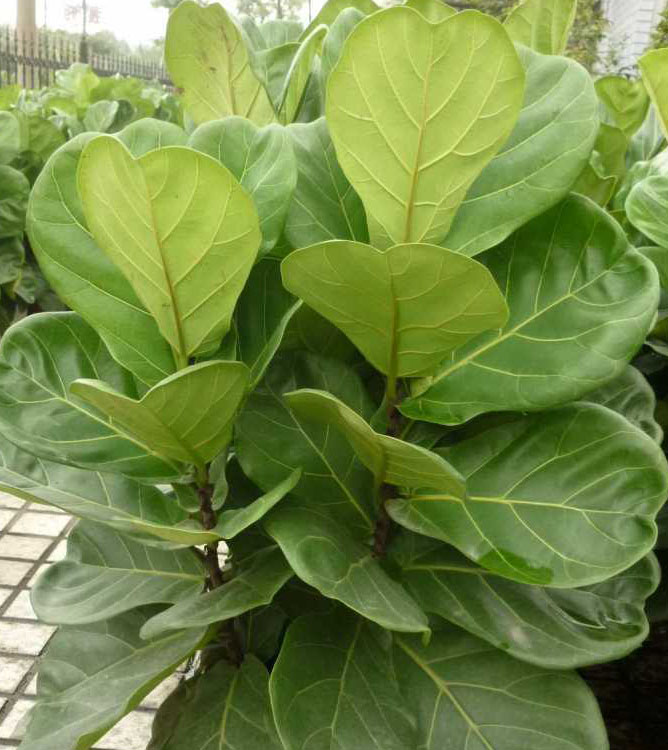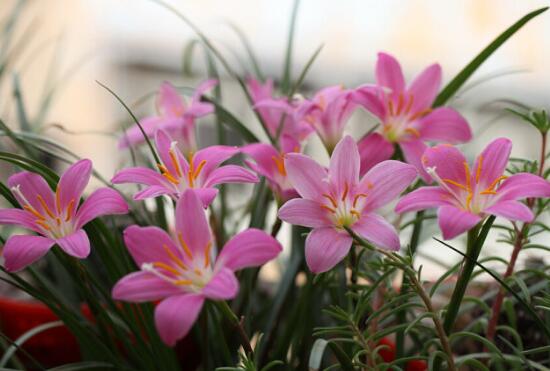Perforated brown spot of cherry blossoms
Symptoms and pathological changes: The disease mainly occurs in the growth leaves. The disease gradually spread upward from the lower leaves, began to grow needle-sized purple-brown spots on the leaves, and then expanded into new round, 3~5 mm brown spots, the edge of the disease formed a light brown separation layer. After the disease spot part falls off, leaves a small hole, sometimes two or three disease spots re-synthesis irregular shape. Most gray and black granular conidia could be formed on the surface of old disease spots. In addition to the disease harm cherry, but also harm peach, red-leaf plum and other Rosaceae flowers. Not only affect the ornamental, but also can cause early defoliation, poor growth and development. The pathogen of the disease belongs to ascomycete fungi, which overwinters in the form of ascocarp on trees. In the second year, ascospores are formed in the ascocarp. After maturity, they spread and germinate and invade healthy leaves. The disease usually starts in June and reaches its peak in August and September.
Control methods: 1. Collect and burn the diseased leaves to eliminate the infection source. Strengthen conservation and management to enhance plant disease resistance. 2. From the beginning of cherry blossom leaf development, spray 500 times solution of Zineb, 1000 times solution of A base thiophane, or 200 times Bordeaux solution every 7~10 days for several times in succession to prevent disease.

Prevention and control method of cherry perforation brown spot
Cherry perforation brown spot disease: occurs in 5 to 6 months, leaves appear purple-brown spots, gradually expand into a round, the disease spots dry and shrink into holes, the pathogen mostly winter on the diseased leaves, the optimal temperature for development is 25 ℃ to 28℃, spread by wind, in rainy season is conducive to infection, weak tree, poor drainage, poor ventilation and light transmission, the disease occurs seriously.
Control methods:
(1) Strengthen cultivation management, prune branches reasonably, cut off diseased shoots, clean up diseased leaves in time and burn them, and create clean growth conditions for plants.
(2) Before the new shoots germinate, 3 to 5 Baume degree of sulfur mixture can be sprayed. During the disease period, 160 times of Bordeaux mixture or 50% Benlaite WP can be sprayed 1000 to 2000 times, or 15% Zineb 600 times to 800 times.
brown spot perforation of cherry
[Distribution] Cherry brown spot perforation is an important disease of cherry leaves, which occurs in cherry planting areas in China.
[Symptoms] Mainly harmful to growing leaves, but also harmful to young shoots. Infected leaves initially appeared needle-shaped purple-brown spots, soon expanded into round to nearly round spots, 1~4 mm, brown in the middle, slightly concentric ring pattern, purple or reddish brown at the edge, gray brown velvety spots appeared on the spots; in the later stage, there were separation layers around the spots, brown mold appeared on both sides of the infected leaves, the middle of the spots dried and fell off, forming round holes, forming perforated spots, and when several spots overlapped, the perforations were irregular. The disease spots can be connected with each other, and when the disease spots on the leaves are many, the leaves fall off early.
[Pathogen] Pathogen is fungus, Cercospora circulissa, conidia densely bunched, conidia flagellate to inverted stick, olive color, straight or slightly curved, with 1~7 septa.
[Pathogenesis] The pathogen still harms many kinds of woody flowers such as peach, plum, apricot and plum. The pathogen overwinters in diseased shoots and fallen leaves. Ascospores mature in spring and are spread by rain and wind the following year when the temperature is suitable. Generally, the disease starts from the lower leaves in June, the peak period is August to September, the disease is serious when the wind and rain are frequent, and only a few leaves remain on the plant in late September. Poor ventilation, dense plants and weak tree vigor are favorable conditions for serious disease occurrence. Summer drought, weak tree vigor, high incidence of disease.
[Control methods]
(1)Chemical control: spray 65% zinc 500 times solution or bordeaux 3-5 degrees sulfur mixture or 1:1:100-200 times bordeaux mixture before and after leaf expansion (especially for seedlings). Or spray Baume 2~3 degree stone sulfur mixture or 1% Bordeaux mixture before germination to disinfect trees. Spray 1.02-1.04 kg/L of sulfur mixture before leaf expansion, spray 800 times solution of 50% carbendazim, or 1 500 times solution of 70% thiophanate-methyl, or other fungicides after leaf expansion. For bacterial perforation, zinc sulfate lime solution (zinc sulfate 500 g, hydrated lime 2000 g, water 120 kg) can be sprayed after leaf expansion.
(2)Spraying 1500 times solution of 50% Benlaite WP or 600 times solution of 65% Zineb or 1000 times solution of 50% Carbendazim at the onset of disease has good control effect.
(3)Strengthen cultivation management, create good ventilation and light transmission conditions, apply more phosphorus and potassium fertilizer, and enhance disease resistance. Do not plant cherry blossoms in the tuyere area, watering in time when drought occurs.
(4)Cleaning the yard, removing diseased leaves and burning them in the fall, combined with pruning to remove diseased branches, reduces the source of infection in the coming year.
- Prev

How should Qin leaf banyan get leaf spot disease?
Short-term temperature fluctuations and too much water in the dormant period will cause leaf spot disease, and the diseased leaves should be removed in serious cases. Control methods: timely removal of diseased tissue, centralized burning; rotation, indoor soil change; not suitable for plant spraying; spraying from the early stage of the disease to prevent the spread of the disease.
- Next

Is the wind and rain orchid poisonous? is the wind and rain orchid suitable for the bedroom / poisonous breeding room?
As a beautiful flower, the efficacy of Fengyulan is very good. First of all, it is good-looking and pleasing to the eye. Secondly, it can purify the air, beautify the home, and let us have a healthy growth environment. Such a plant is naturally lovely, but some people say it is poisonous! So is the orchid poisonous?
Related
- Fuxing push coffee new agricultural production and marketing class: lack of small-scale processing plants
- Jujube rice field leisure farm deep ploughing Yilan for five years to create a space for organic food and play
- Nongyu Farm-A trial of organic papaya for brave women with advanced technology
- Four points for attention in the prevention and control of diseases and insect pests of edible fungi
- How to add nutrient solution to Edible Fungi
- Is there any good way to control edible fungus mites?
- Open Inoculation Technology of Edible Fungi
- Is there any clever way to use fertilizer for edible fungus in winter?
- What agents are used to kill the pathogens of edible fungi in the mushroom shed?
- Rapid drying of Edible Fungi

